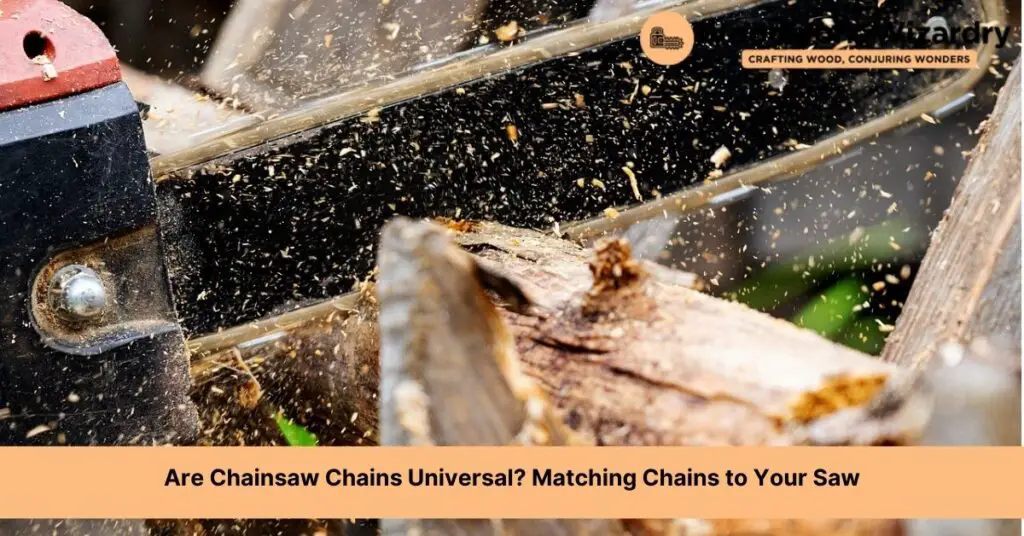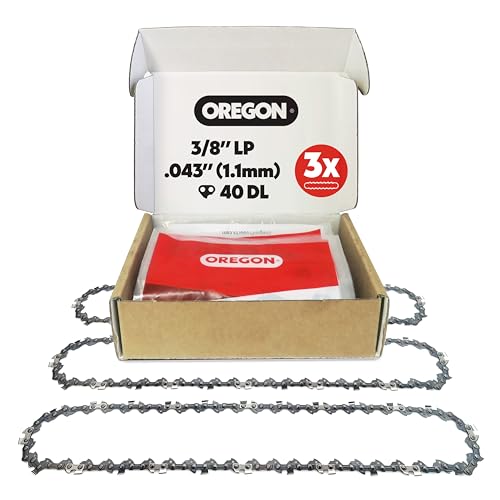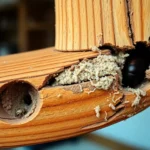When we think about tackling those big outdoor projects, a chainsaw is often our go-to tool. But before we can slice through logs like butter, there’s a crucial question we’ve all faced at some point: Are chainsaw chains universal? It’s a simple query that opens up a world of considerations, from the size and type of our chainsaw to the specific tasks we’re aiming to accomplish.
Navigating the world of chainsaw chains can feel like walking through a dense forest without a map. With so many types and sizes available, it’s easy to wonder if there’s a one-size-fits-all solution. We’re here to shed some light on this topic, guiding you through the essentials of chainsaw chains. Whether you’re a seasoned lumberjack or a weekend warrior, understanding the compatibility of chainsaw chains is key to ensuring your next project goes off without a hitch.
Understanding Chainsaw Chains
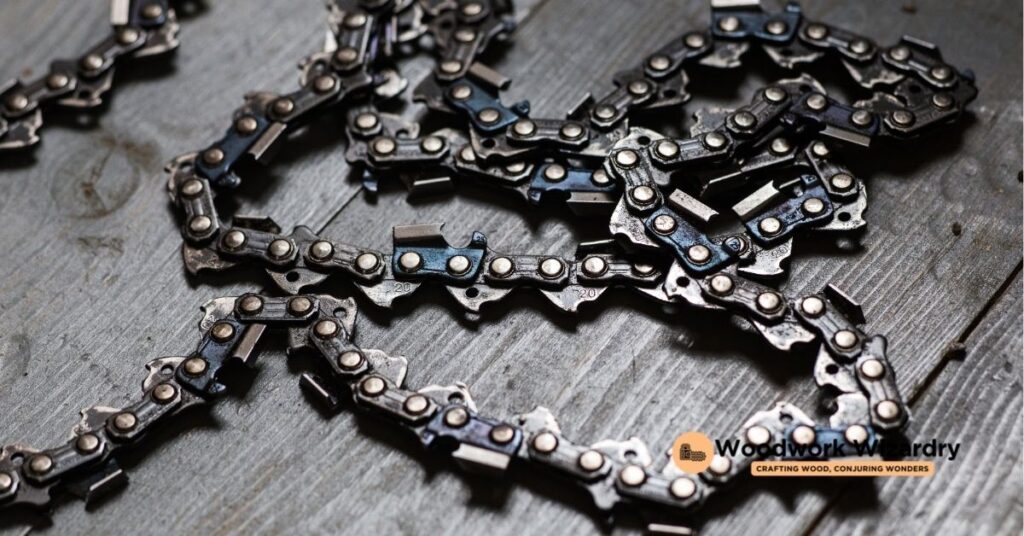
Following our discussion on the importance of identifying the correct chainsaw chain before commencing any outdoor project, let’s dive deeper into the mechanics behind chainsaw chains to further understand their uniqueness. Knowing the intricacies of these chains plays a pivotal role in not only ensuring the success of your projects but also in maximizing the efficiency and lifespan of your equipment.
Firstly, chainsaw chains come in various sizes and shapes, each designed for specific tasks and types of wood. The pitch, gauge, and drive link count are the three main dimensions that differentiate one chainsaw chain from another.
- Pitch refers to the distance between the chain’s drive links, affecting how well the chain cuts through wood. Common pitches include 1/4″, .325″, 3/8″, and .404″.
- Gauge is the thickness of the drive link where it fits into the saw’s guide bar. It ranges typically from .043″ to .063″. Using the wrong gauge can lead to poor performance or even damage.
- Drive Link Count is the total number of drive links on a chain. This number determines the chain’s length and must match the saw’s guide bar size.
Another aspect to consider is the chain type. There are several chain designs, each optimized for specific applications:
- Full Chisel Chains have square-cornered teeth, ideal for fast cutting in clean wood.
- Semi-Chisel Chains feature rounded teeth, offering a more forgiving cutting experience in dirtier conditions.
- Low-Profile Chains are designed for lighter-duty work, providing a safer option for less experienced users.
Manufacturers often produce chains that are tailored to their saws, leading to variations in compatibility. This specificity means that while some chains may appear interchangeable, optimal performance and safety are only guaranteed when the chain matches the manufacturer’s specifications for a given model.
In light of these considerations, it becomes clear that chainsaw chains are not universal. Selecting the right chain involves understanding the detailed specifications of your chainsaw and the nature of your project. Armed with this knowledge, you can ensure not only the success of your projects but also the longevity and optimal performance of your chainsaw.
Are Chainsaw Chains Universal?
Following our discussion on the critical dimensions and types of chainsaw chains, a common question arises: Are chainsaw chains universal? The simple answer is no. Each chainsaw requires a specific chain that matches its specs, including pitch, gauge, and drive link count, to operate safely and efficiently. These specifications ensure the chain fits perfectly on the chainsaw’s guide bar and interacts correctly with the drive sprocket, crucial for effective cutting and user safety.
Let’s dive deeper into why chainsaw chains aren’t universal:
- Pitch Compatibility: The pitch, which is the distance between the drive links, needs to match the chainsaw’s sprocket. Using a chain with an incorrect pitch can lead to poor performance or even damage to the chainsaw.
- Gauge Fit: The gauge, or thickness of the drive link, must fit the guide bar’s groove exactly. A mismatch here can cause the chain to slip off or get jammed during operation.
- Drive Link Count: The total number of drive links on the chain must correspond with the length of the chainsaw’s guide bar. Too many or too few links will prevent the chain from fitting.
Moreover, while aftermarket chains offer compatibility with various chainsaw models, they still adhere to the principle of matching the specifications provided by the chainsaw manufacturer. Furthermore, the intended use of the chainsaw, whether for light pruning or heavy-duty cutting, influences the type of chain required, further emphasizing the need for specific chains.
Understanding that chainsaw chains are not universal underscores the importance of referring to the chainsaw’s manual or consulting with a professional when selecting a replacement chain. By ensuring the chain matches the chainsaw’s specifications, users maintain optimal performance, extend the lifespan of their equipment, and uphold safety standards.
Types of Chainsaw Chains
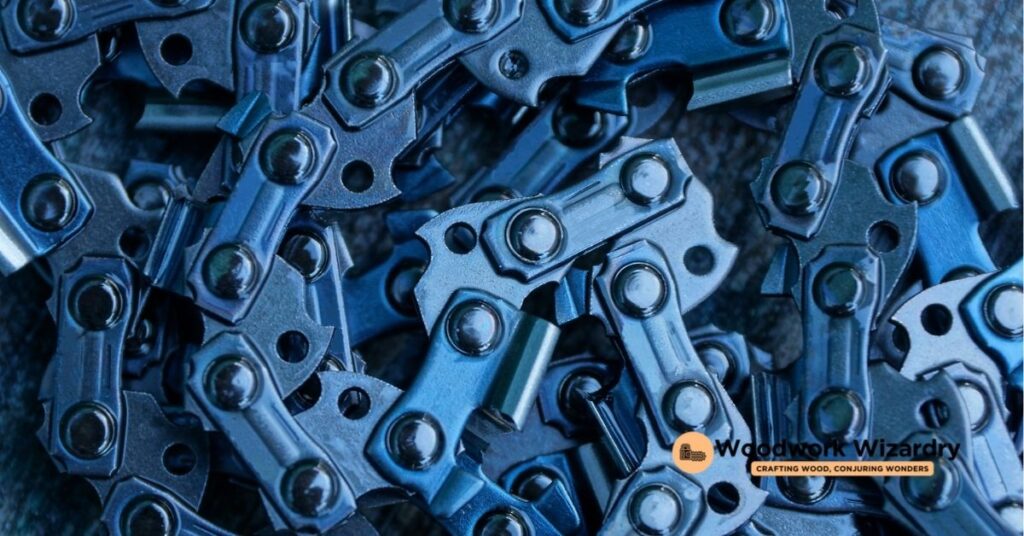
Understanding that chainsaw chains aren’t universal leads us to explore the various types available. Each type serves a specific purpose, designed to enhance performance under different conditions. Here’s a breakdown of the most common chainsaw chains, clarifying their unique features and applications.
- Full Chisel Chains: Characterized by square-cornered teeth, full chisel chains cut fast and efficiently. They’re ideal for cutting hardwoods but may not be the best choice for dirty wood or in conditions prone to kickback, given their aggressive nature.
- Semi-Chisel Chains: With round-cornered teeth, semi-chisel chains are more tolerant of dirt and debris, making them a versatile choice for both soft and hardwoods. They might cut slower than full chisel chains but excel in durability and ease of maintenance.
- Low-Profile Chains: Designed for lighter-duty tasks, low-profile chains feature safety elements to minimize kickback, making them suitable for novice users or those preferring added safety features. They require frequent sharpening but offer a gentler cutting experience.
- Ripping Chains: Specifically designed for cutting parallel to the wood grain, ripping chains are used mainly in sawmills for producing lumber. They feature a unique tooth design that results in a smooth cut, essential for milling applications.
- Carbide-Tipped Chains: Known for their durability, carbide-tipped chains can cut through the toughest materials, including frozen wood and corrosive environments. Their high resistance to wear makes them a go-to for professional use, where downtime is a critical factor.
Selecting the right type of chain depends on the material you’re cutting, your chainsaw model, and your comfort level with maintenance and safety considerations. A key takeaway here is the importance of matching your chainsaw’s specifications with the chain’s design to ensure a safe, efficient cutting experience. Always refer to your chainsaw’s manual or consult with a professional if you’re unsure which chain type best fits your needs.
Measuring Your Chainsaw for the Right Chain
Moving on from understanding the types of chainsaw chains, it’s critical to dive into how we can measure our chainsaws to ensure we pick the right chain. The accuracy of these measurements guarantees not just the enhanced performance of our chainsaw but also ups the safety ante significantly.
Measuring doesn’t require any specialized tools; however, it does demand a keen eye and attention to detail. The three key dimensions we need to focus on are pitch, gauge, and drive link count. Let’s break these down for clarity:
- Pitch is the distance between any three consecutive rivets divided by two. It’s essential in determining the size of the chain that our chainsaw needs. The most common pitches are 1/4″, .325″, 3/8″, and .404″. To measure, we simply lay the chain flat and pick any rivet, then count three rivets and measure the distance.
- Gauge refers to the thickness of the drive links and is vital because it must fit perfectly into the chainsaw bar. Gauges commonly range from .043″ to .063″. To measure this, we use a caliper for accuracy, placing it over one of the drive links to get the measurement.
- Drive Link Count is the total number of drive links in the chain. This tally is crucial because the chain needs to fit the chainsaw bar length precisely. Counting the drive links might be the simplest step; we count each link along the chain until we have our total.
After gathering these key measurements, it’s advisable to cross-reference our findings with the chainsaw’s manual, ensuring the specifications align perfectly. If the manual is not available, a quick consultation with a chainsaw professional can save a lot of guesswork.
Getting these measurements correct is a straightforward task once we’re familiar with what to look for. It lays the foundation for selecting the right chain, culminating in a smooth, efficient, and safe cutting experience that’s tailored to our project requirements.
Top Brands and Their Compatibility Standards
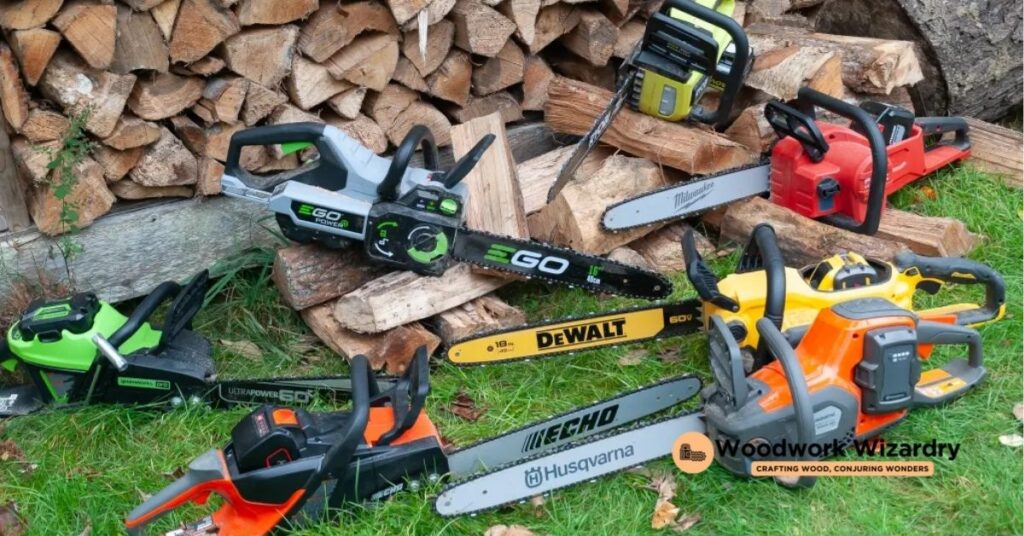
Having discussed the importance of getting the measurements right to ensure a smooth and safe cutting experience, we move on to explore the top brands in the chainsaw industry and their compatibility standards. Understanding the nuances of different brands’ chains can guide you in making an informed purchase that matches your chainsaw’s specific needs.
Stihl
Renowned for its innovation and quality, Stihl chainsaws come with specific requirements for their chains. Stihl typically uses a proprietary pitch measurement that is not always compatible with chains from other manufacturers. For instance, their chains might have a unique pitch such as 3/8″ Picco, differing from the more standard pitches available. This requires purchasers to seek out Stihl-branded chains or compatible alternatives designed specifically for their models.
Husqvarna
Husqvarna, another leading name, produces chainsaws that can accommodate a broader range of chain brands, provided the pitch, gauge, and drive link count align. Many users appreciate Husqvarna’s flexibility, but the brand also offers its line of chains optimized for durability and performance, fitting their models like a glove.
Echo
Echo chainsaws are known for their robustness, and like others, they demand precisely fitting chains. Echo often focuses on specific chain types that enhance cutting efficiency and safety. While Echo chainsaws can work with generic chains, using Echo-branded chains guarantees optimal compatibility and performance.
Oregon
Not strictly a chainsaw manufacturer, Oregon specializes in chainsaw chains and bars, offering products compatible with most major chainsaw brands. Oregon’s dedication to universal compatibility standards makes it a go-to choice for chainsaw users seeking quality and versatility. Their chains are celebrated for ease of installation and broad compatibility, often fitting Stihl, Husqvarna, and Echo models with minimal fuss.
Choosing the right chain involves more than understanding your chainsaw’s specifications; it also means considering the compatibility standards of these top brands. Whether opting for a branded chain or seeking a universal fit, ensuring compatibility with your chainsaw’s specifications is paramount. This attention to detail guarantees your chainsaw operates at peak performance, providing a safe and efficient cutting experience tailored to your project’s specific needs.
How to Replace a Chainsaw Chain
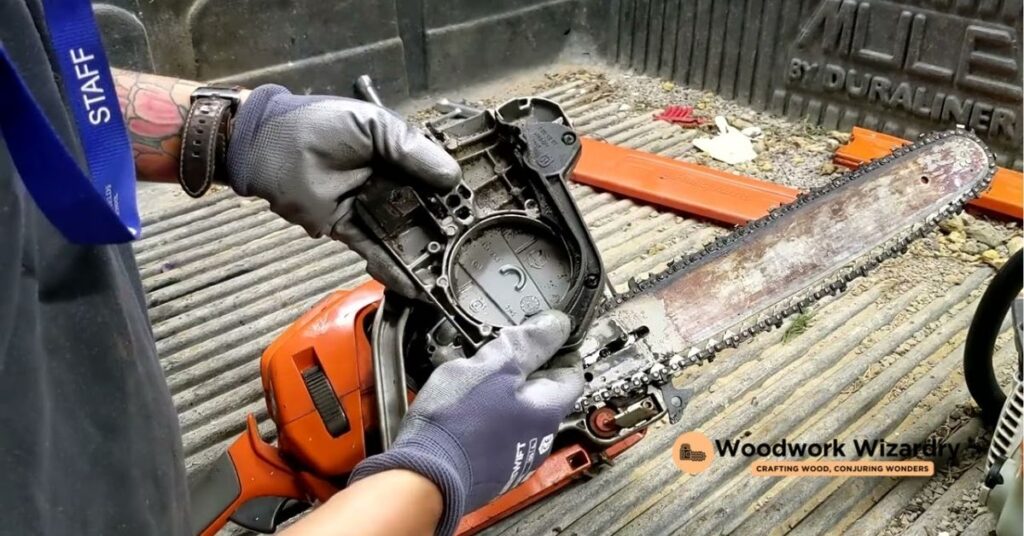
Replacing a chainsaw chain might seem daunting at first, but with the right steps, it’s a task we can all manage safely and effectively. Our guide here builds on understanding the specific requirements of chainsaw chains from top brands like Stihl, Husqvarna, Echo, and Oregon, as discussed previously. Now, let’s focus on the replacement process.
Firstly, ensure the chainsaw is off and the engine is cool. Safety comes first, so also make sure to wear protective gloves.
- Locate the Chain Tensioning Screw: This screw is crucial for both removing the old chain and installing the new one. Its location varies but is typically found on the side of the chainsaw, near the bar.
- Loosen the Guide Bar: We’ll need to loosen the nuts that hold the guide bar in place. Don’t remove them entirely; just loosen enough to allow the guide bar to move freely.
- Release the Tension: Turning the tensioning screw counter-clockwise will loosen the chain. This reduces tension, making it easier to remove the chain from the bar.
- Remove the Old Chain: Carefully lift the chain off the guide bar, starting at the top and working your way around. Be cautious of sharp edges.
- Clean the Guide Bar and Saw: Before installing the new chain, it’s a good moment to clean any debris and sawdust from the guide bar and the chainsaw itself. This ensures optimal performance and longevity of the new chain.
- Install the New Chain: Ensure the cutting teeth face forward on the top of the guide bar. Loop the chain around the sprocket, then align it along the guide bar, ensuring it sits properly in the groove.
- Tension the Chain: Once in place, we’ll need to adjust the tensioning screw clockwise until the chain fits snugly against the guide bar but still moves freely.
- Tighten the Guide Bar Nuts: Finally, with the new chain correctly tensioned, we can tighten the guide bar nuts, securing everything in place.
- Double-Check the Tension: After tightening the nuts, it’s pivotal to re-check the chain’s tension. The chain should have a slight give but not hang loose from the bar. If necessary, adjust the tensioning screw slightly until the tension is just right.
Conclusion
We’ve walked through the essentials of chainsaw chain compatibility and the meticulous process of replacing a chain. It’s clear that while chainsaw chains aren’t universal, understanding your saw’s requirements and following our guide can make the replacement process a breeze. Remember, the right chain not only ensures your safety but also enhances your saw’s performance. So next time you’re gearing up for a task, take a moment to check your chain’s fit and tension. Here’s to smooth and efficient cutting on all your future projects!
Related Posts:

